The Listener | Maine Sound Artist Dianne Ballon
For sound artist Dianne Ballon, Maine’s beauty can be heard as well as seen.
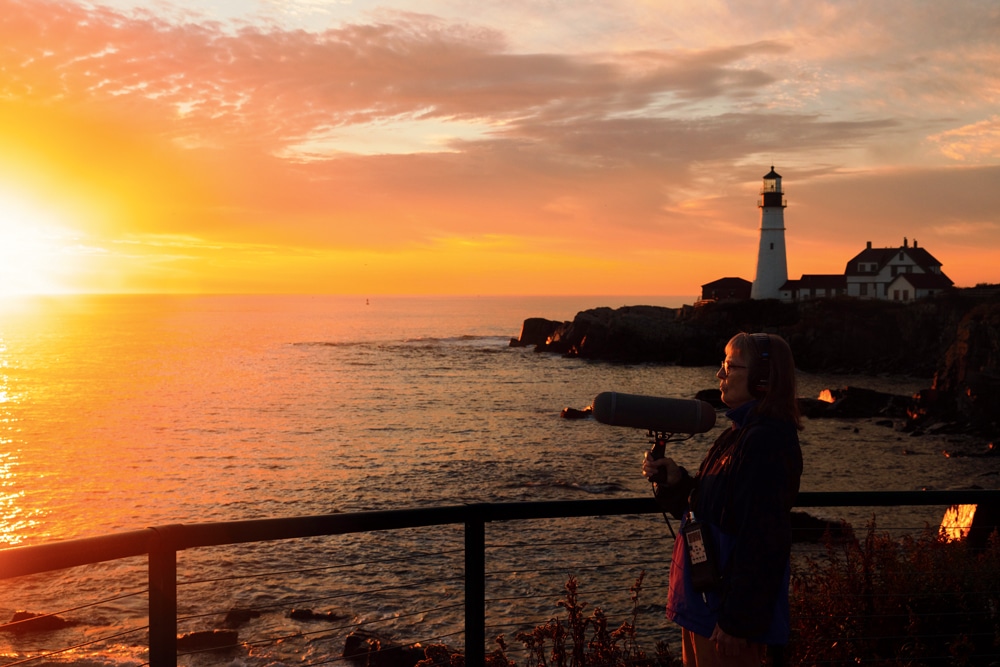
At sunrise, Cape Elizabeth’s Fort Williams Park is nearly deserted as Ballon aims her mic toward the restless sounds of the sea.
Photo Credit : Gabe BornsteinDianne Ballon is frustrated with me. We’re sitting at the corner desk in her Portland living room that functions as her studio, and Ballon, one of Maine’s most accomplished sound artists, is batting away another of my questions about how exactly she would describe the “pure sound” of Maine that she’s chasing. Is it pre-industrial? Pre-humanity? Or can automation enter into it? And if so, what kind? Why is, say, the roar of a speedboat not pure sound, while the automated foghorn at the Portland Head Light, stimulated by radio transmitter as many foghorns now are, why is that still, to her, “pure”?
“I feel like you don’t get it,” she says finally. “What is pure sound? It’s hard for me to communicate. It’s like asking what is life, or why did you eat something for breakfast this morning. Listen to my work, that is me explaining it to you. Listen to how beautiful this sounds.”
Ballon swivels in her seat and clicks the computer’s mouse until the massive monitor before her begins pulsing through the electric blue zigzags of an audio track. From a pair of small tabletop speakers on either end of the desk comes the haunting ding-ding of a Casco Bay bell buoy, alternating with the gurgle and gulp of a boat’s scuppers. Ballon’s long gray hair sweeps forward to cover her face as she dips her head to listen. She is reverential. From the speakers, the metal clang of the bell buoy combines with the sloshing of the scupper in irregular refrain. Ding-ding, sloosh, ding, sloosh, ding-ding, sloosh-splash. Pure sound, in this case, is a chance melody.
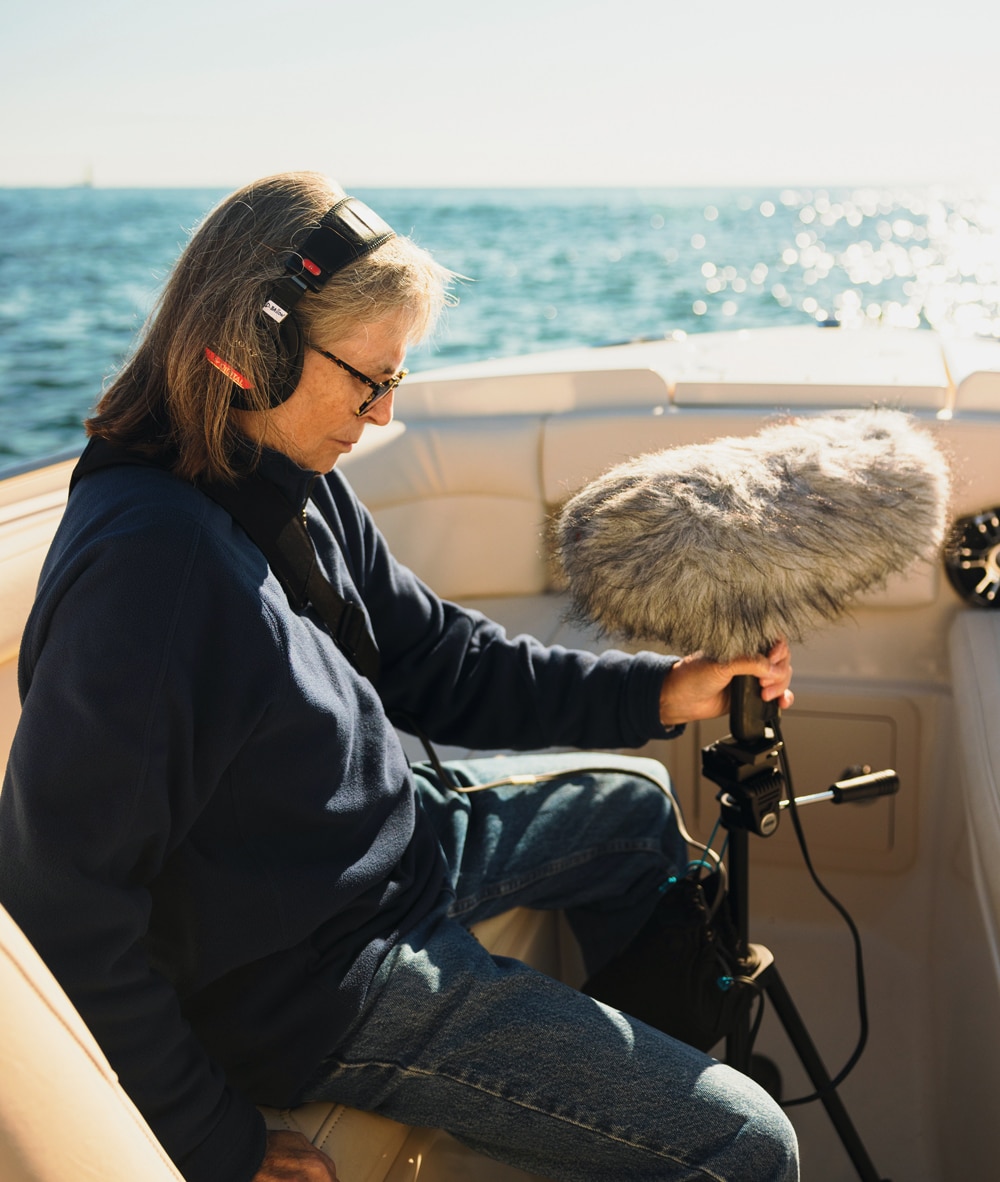
Photo Credit : Gabe Bornstein
The track ends. Ballon lifts her head, her eyes bright with excitement. “Really, the bell buoys is what started it for me—that absolutely gorgeous, uneven ding-ding-ding of the bell buoys, it tugs at my sleeve,” she says, with a scratchy voice that is syrupy-slow, like an adagio tune broadcast over one of the vintage radios around the room. “That’s what happens to me with sound. It tugs me to the point where I finally say, ‘I’ve got to do this. I’ve got to open up other folks’ ears to the beauty of this particular sound.’”
“Dianne’s work reminds you to stop and listen to the sounds that are all around you, the so-called white noise,” says David Greenham, interim executive director of the state-run Maine Arts Commission, which in 2021 granted Ballon a fellowship to continue her “Sounds of the Maine Coast” series, of which the bell buoy track is an early cut. “She’s looking at the parts while the rest of us are listening to the sum of the parts. She’s focusing on that one instrument in a symphony of sounds.”
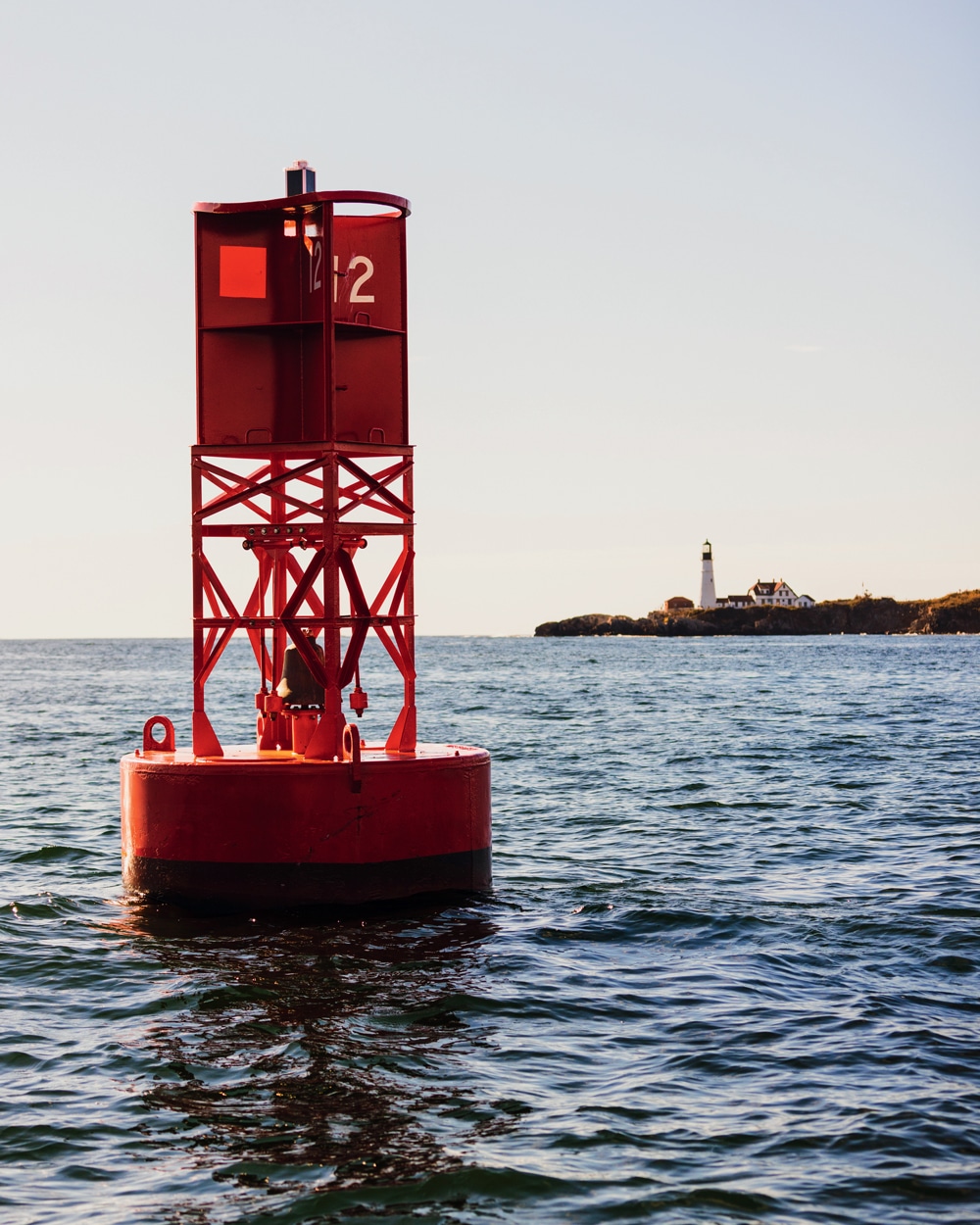
Photo Credit : Gabe Bornstein
Elevating sound isn’t always easy in a state known for its looks. Over her 35-plus years as a sound artist, most of it in Portland, Ballon has been kicked off docks by fishermen, struggled to get her ambient sounds broadcast on National Public Radio, and been plagued everywhere by man-made interruptions like airplanes, grounds crews, cars, and, most of all, man himself. The recording process is solitary and methodical, requiring Ballon to be statue-still so as not to taint the track, and even after scouting a location she might not get pure sound when she’s ready to record, thanks to changes in weather, time of day, or any number of other variables. “Sound,” Ballon likes to say, “is elusive.”
Take the Portland Head Light in Cape Elizabeth. It’s just shy of 8 a.m. one clear morning in May. Ballon sits on a camp stool next to a massive, lozenge-shaped stereo mic covered in gray fur windscreen (“Some people call it a dead cat,” she says). She points the mic at the rhythmic rolling of the tide over a pebble beach about 10 feet below our spot on the gravel trail. A glorious sun hangs low in the sky, lighting a trail of golden ocean from the magenta horizon to us. It’s distractingly beautiful, this view. But Ballon only has eyes for the digital recorder in her lap that tracks time and volume. This is the fourth spot she’s tried in the past 20 minutes, all within a short radius of the lighthouse, and finally, finally, she’s got something special.
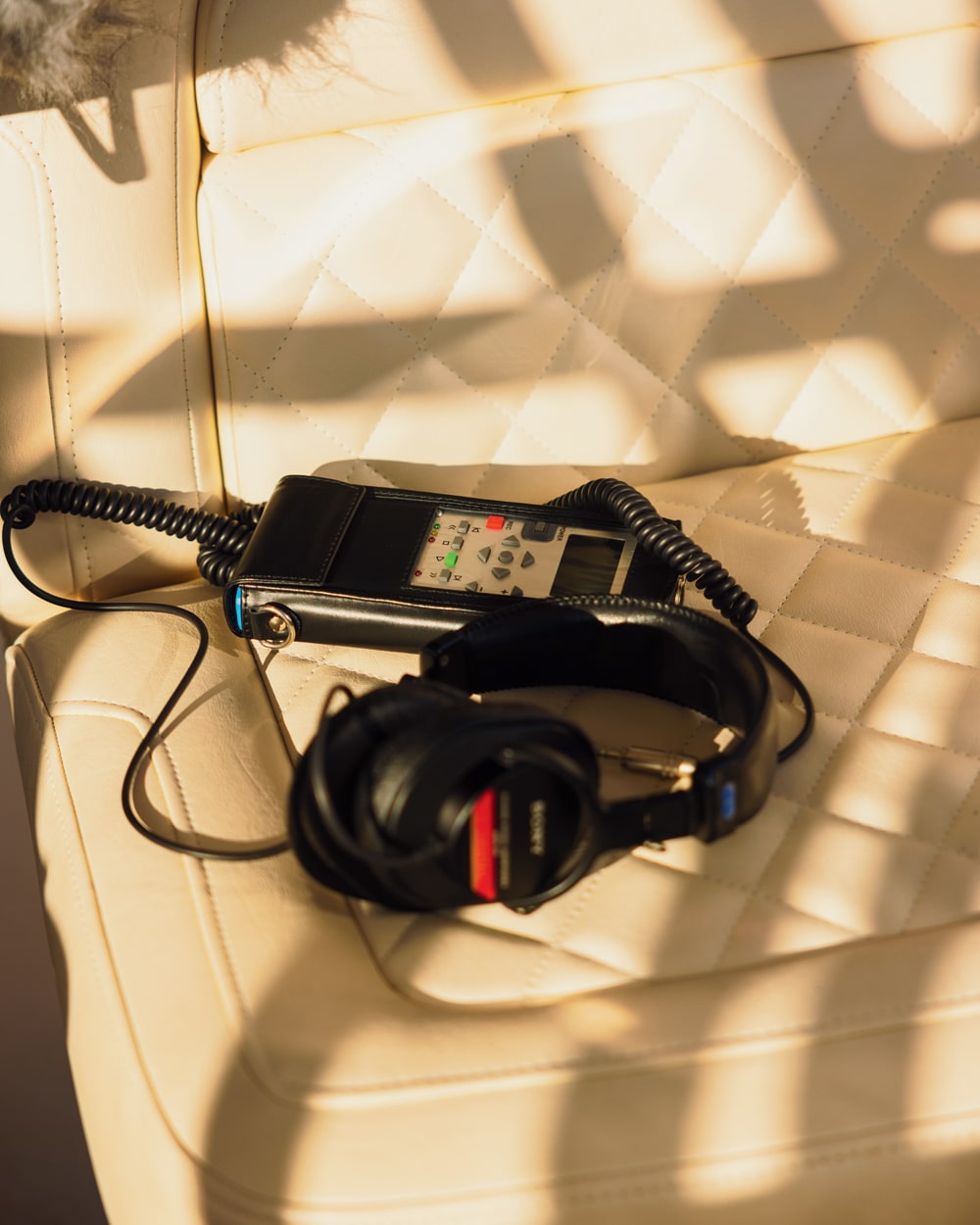
Photo Credit : Gabe Bornstein
Then people show up. Cars rumble, doors slam, shoes crunch on gravel. There’s laughter and idle chatter. Ballon sighs and pulls her headphones down. It’s time to head home and see what she got. “These locations are so beautiful and gorgeous, the sound is so pristine, but a lot of people just talk,” she says. “They have conversations not even about where they are. And I’m always like, Wow, you guys should really just be here and listen.”
* * *
Curt Dugal met Dianne Ballon for the first time in the parking lot of the Port Harbor Marine Boat Club in South Portland. It was cold that spring morning, and Ballon struck him as small and slight in her big down parka. Still, she seemed tougher than he’d anticipated. “I’d expected her to look frail, because she’d mentioned her back surgery in her email, and, obviously, rocking on a boat for somebody who’s had back surgery could be an issue,” says Dugal. “But when I saw her, she seemed eager and excited. It was clearly an adventure for her.”
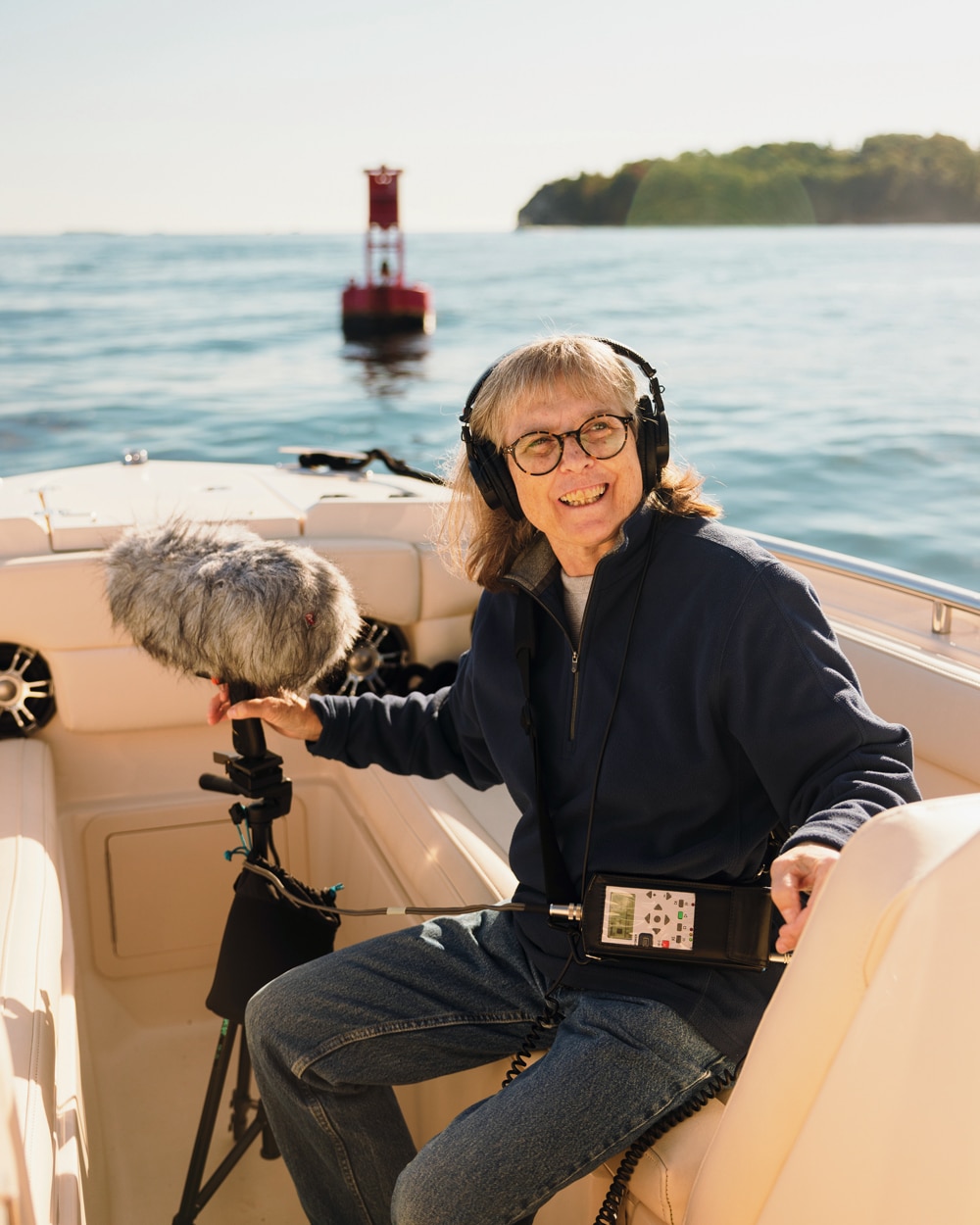
Photo Credit : Gabe Bornstein
Ballon needed someone to take her to record the bell buoys. She’d gotten hooked up with Dugal, an avid recreational boater, through a mutual friend in her curling league. Having a partner in crime, as it were, on the hunt for sound was a new experience for Ballon. She had explained to him via email that he would have to be very, very quiet and that his dog would have to stay home. As they walked to the 25-foot recreational speedboat Dugal had reserved that morning, Ballon said she wanted to record the moments of silence on the water that highlighted the bell buoy sound.
“I was saying to myself there’s no way you’re going to get that level of quiet,” recalls Dugal. “You’ve got waves lapping the boat, you’ve got birds, you’ve got the ferry and other boat noise. There’s just too much else going on.”
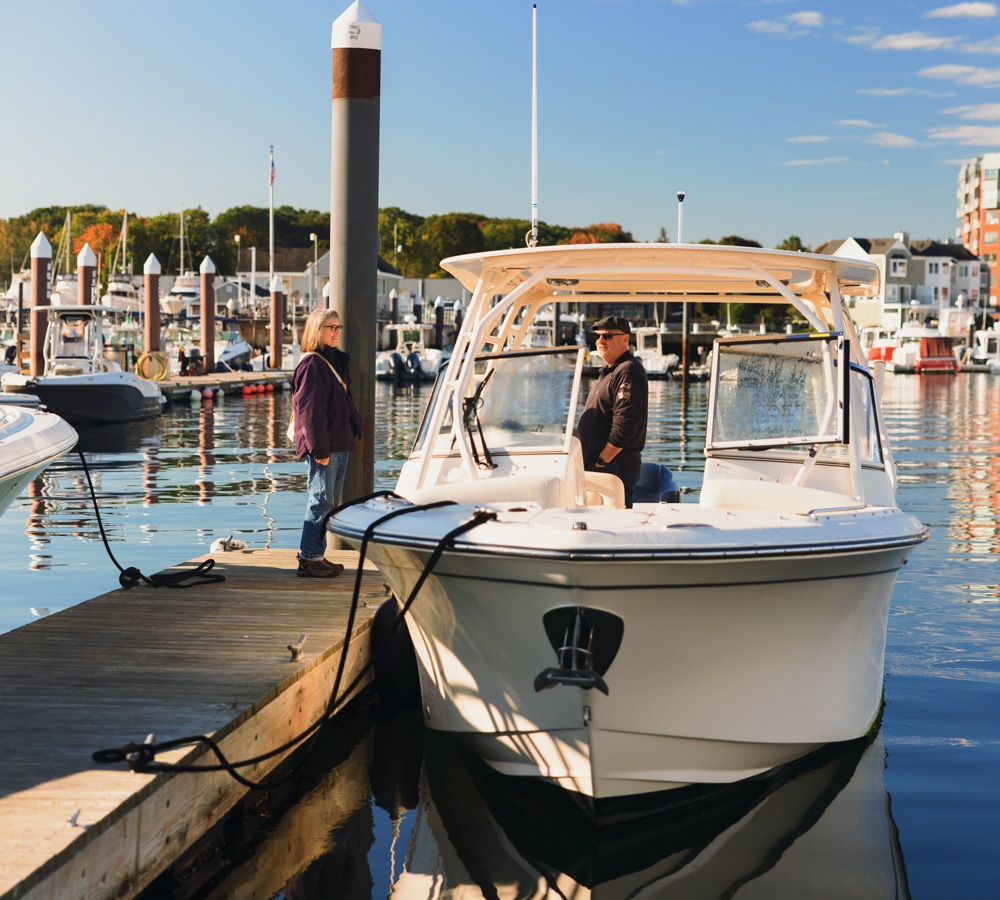
Photo Credit : Gabe Bornstein
It took Dugal and Ballon just a few minutes to motor to the first bell buoy that morning, a skeletal red marker a few hundred yards from the marina. As the boat and buoy swayed in the morning chop, Ballon carefully edged toward the bow. On her head was a bulky pair of headphones, and cords curved around her connecting the dead-cat mic to her headphones and sound monitor. To Dugal, she looked half human, half equipment. She braced herself in the belly of the boat and pointed the mic at the bell buoy, which dinged away obligingly.
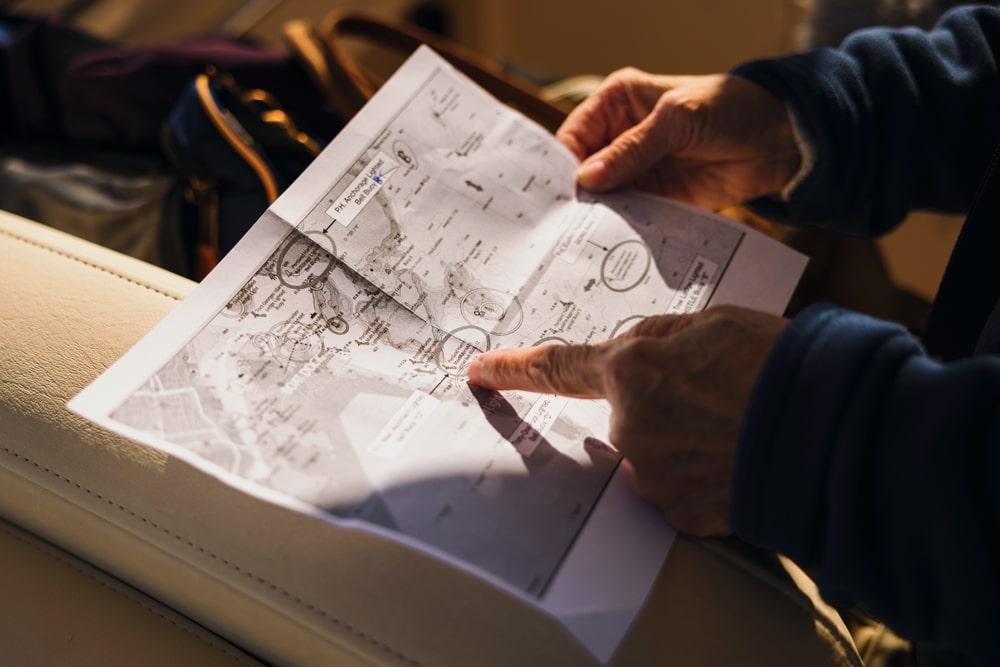
Photo Credit : Gabe Bornstein
Dugal killed the engine and tried his best not to move. He worried he’d have to sit still for a while, but Ballon was efficient. After a few minutes she sat back and pulled her headphones off. “I got it,” she said. They went to another buoy a bit farther out, and spent about an hour on the water that first day.
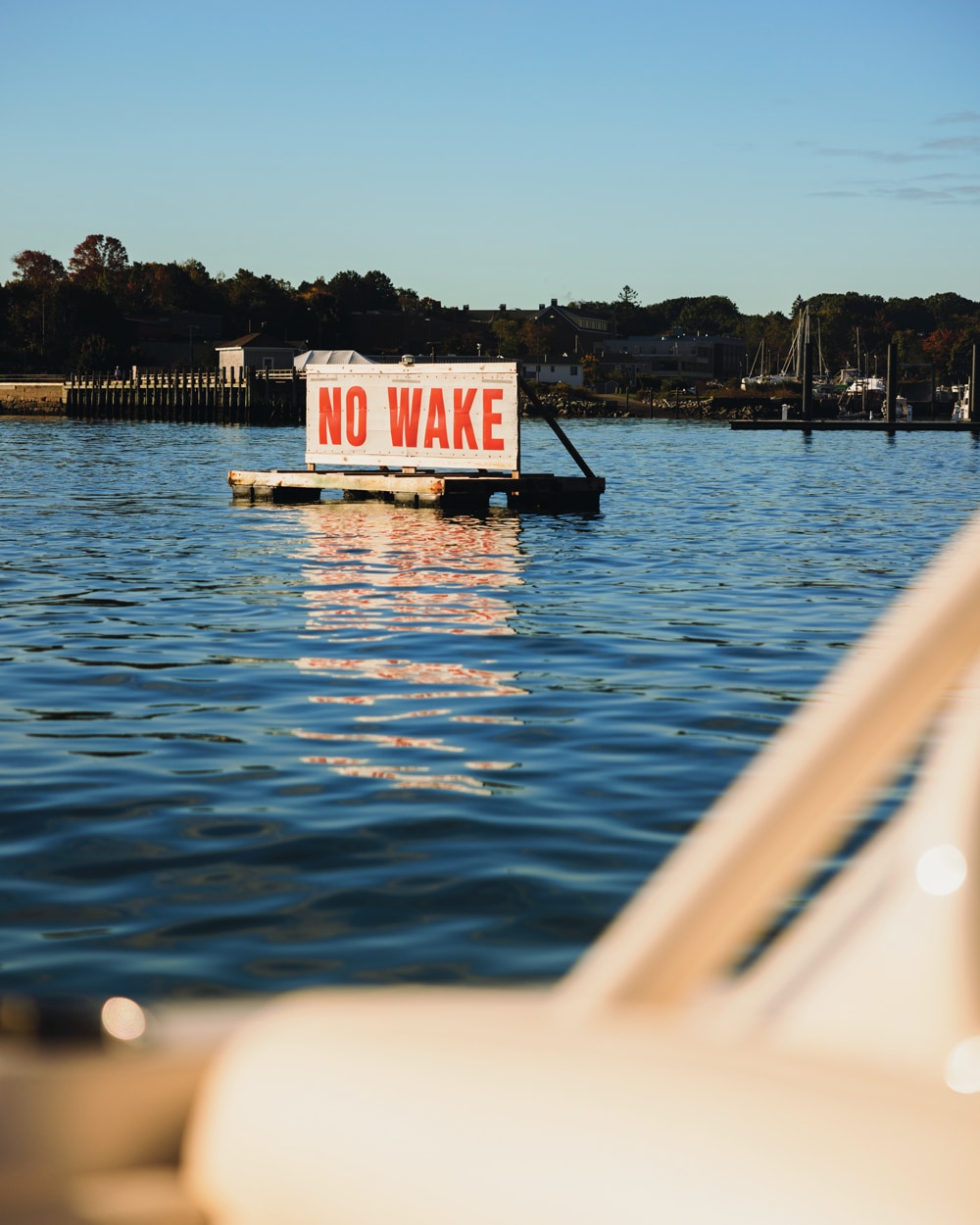
Photo Credit : Gabe Bornstein
Ballon and Dugal went out twice again in the following weeks to record bell buoys and whistle buoys in Casco Bay. Along the way, Dugal, who at age 54 had spent most of his life’s free time on the water, began to hear the ocean differently.
“There were a few moments where it actually was very quiet and we could hear a couple of bell buoys at the same time,” he says. “It was a little bit like when you go outside of the islands when it’s just calm out there, it’s just smooth. And you feel fortunate to be in the right place at the right time. I was a little surprised to get that feeling from sound. I was three miles from Portland but I felt alone. It was a unique sense of solitude.”
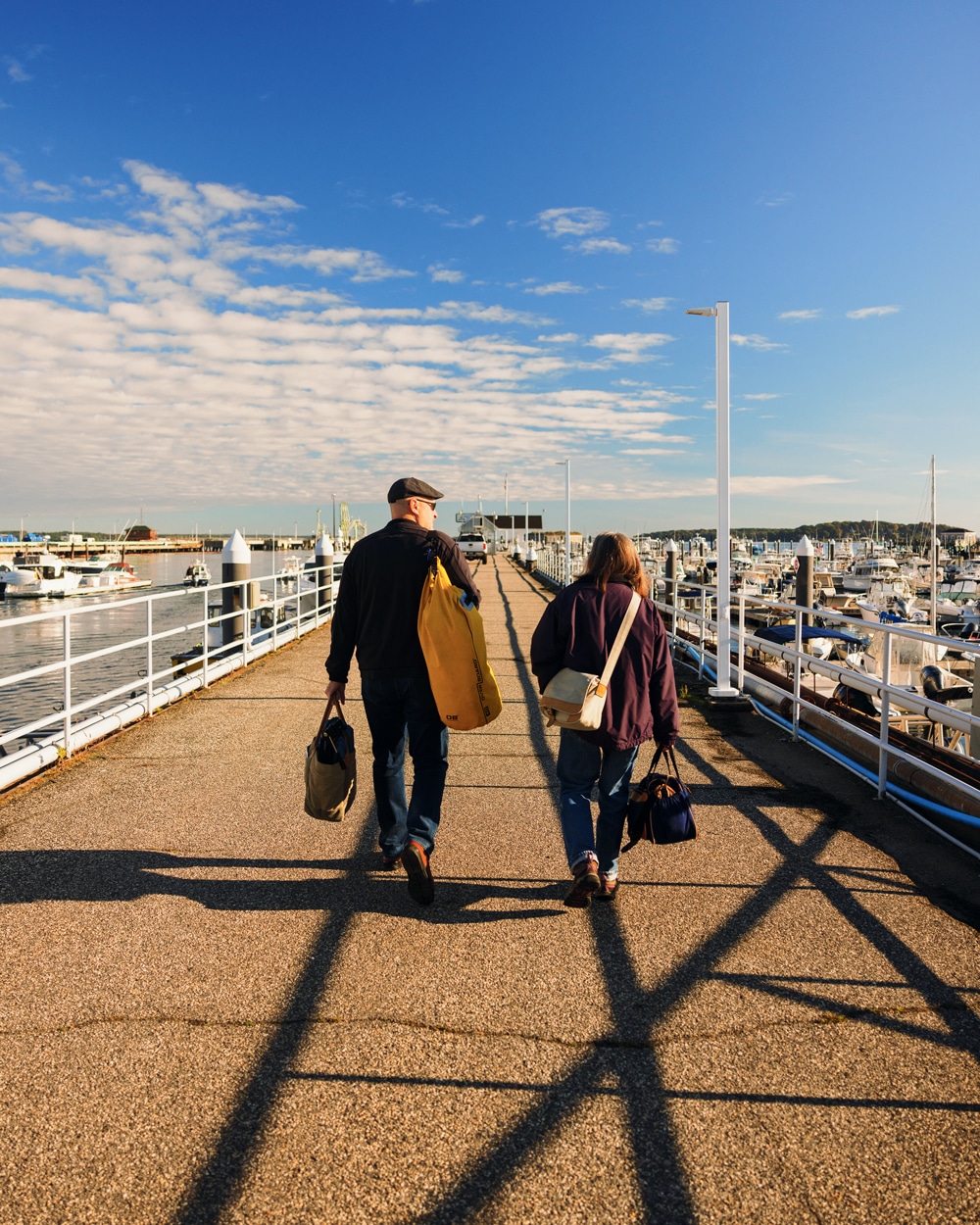
Photo Credit : Gabe Bornstein
Dugal, Ballon tells me later, “gets it.” This thought dawned on her during one of their trips, as he was motoring her across the water and chatting about the bell buoys and how he’d started slowing down to record them with his iPhone instead of ripping past them like he’d always done. Ballon was perched near the bow with her equipment in her lap, listening to him with the spray of saltwater on her face and her long gray hair loose in the breeze. As the boat grumbled and clipped over the waves, she turned the idea over in her mind. She, Dianne Ballon, had opened a stranger’s ears to sound. The loveliness of it, she says, filled her eyes with silent tears.
For more information on her work, go to dianneballonsound.com.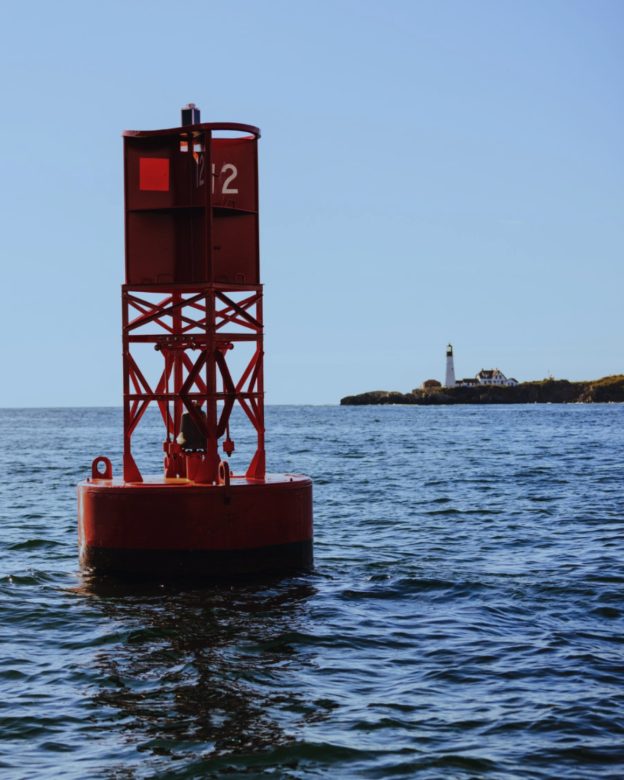
Photo Credit : Gabe Bornstein


